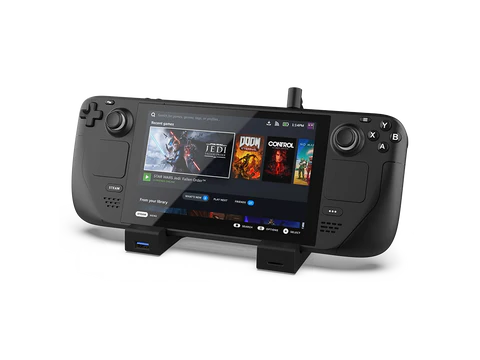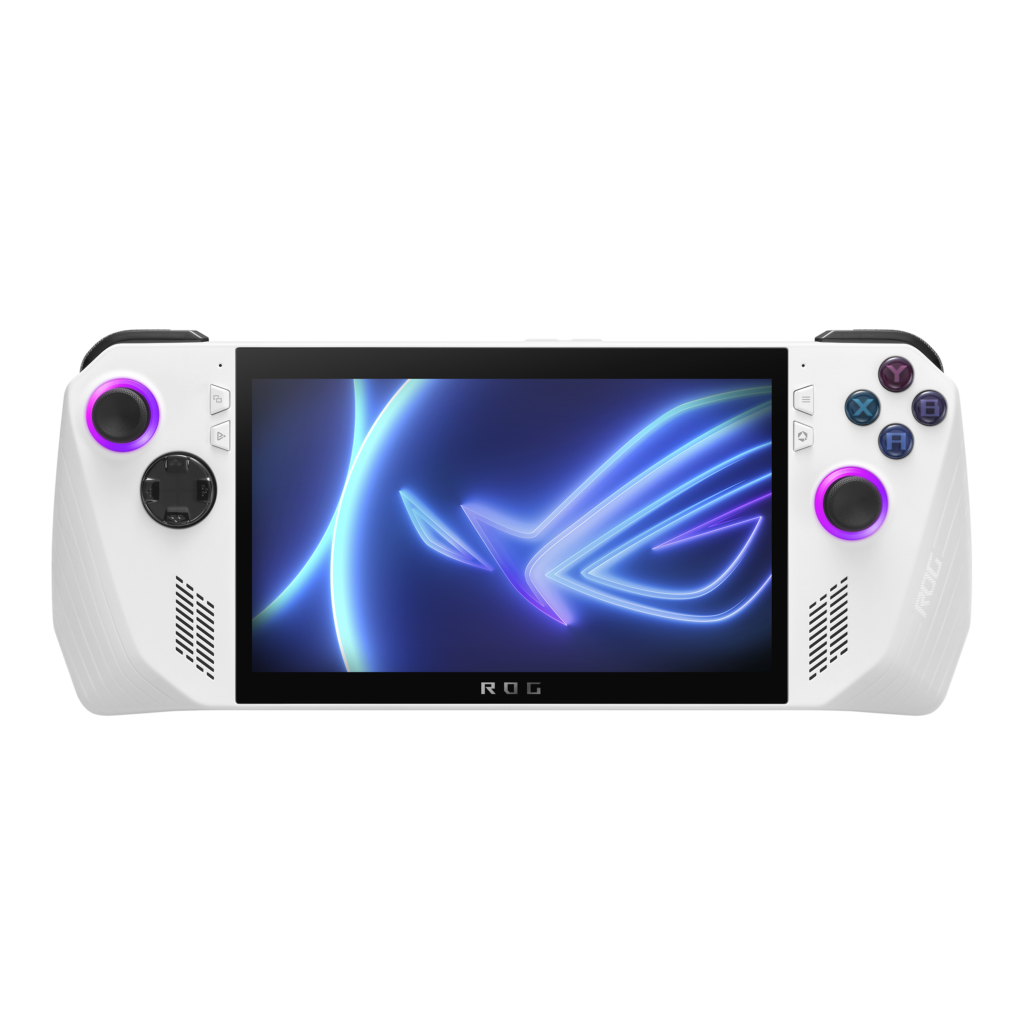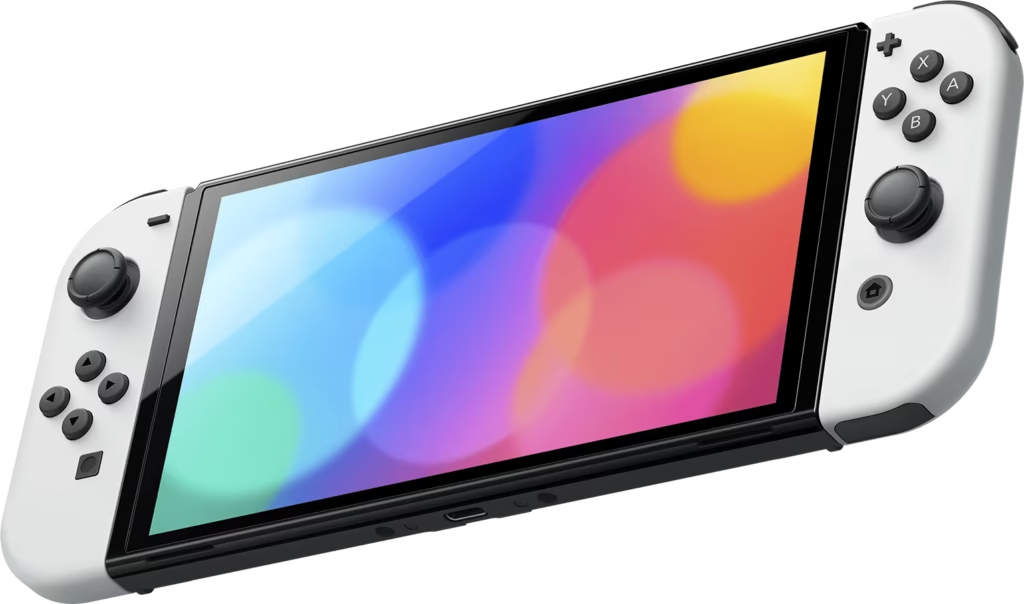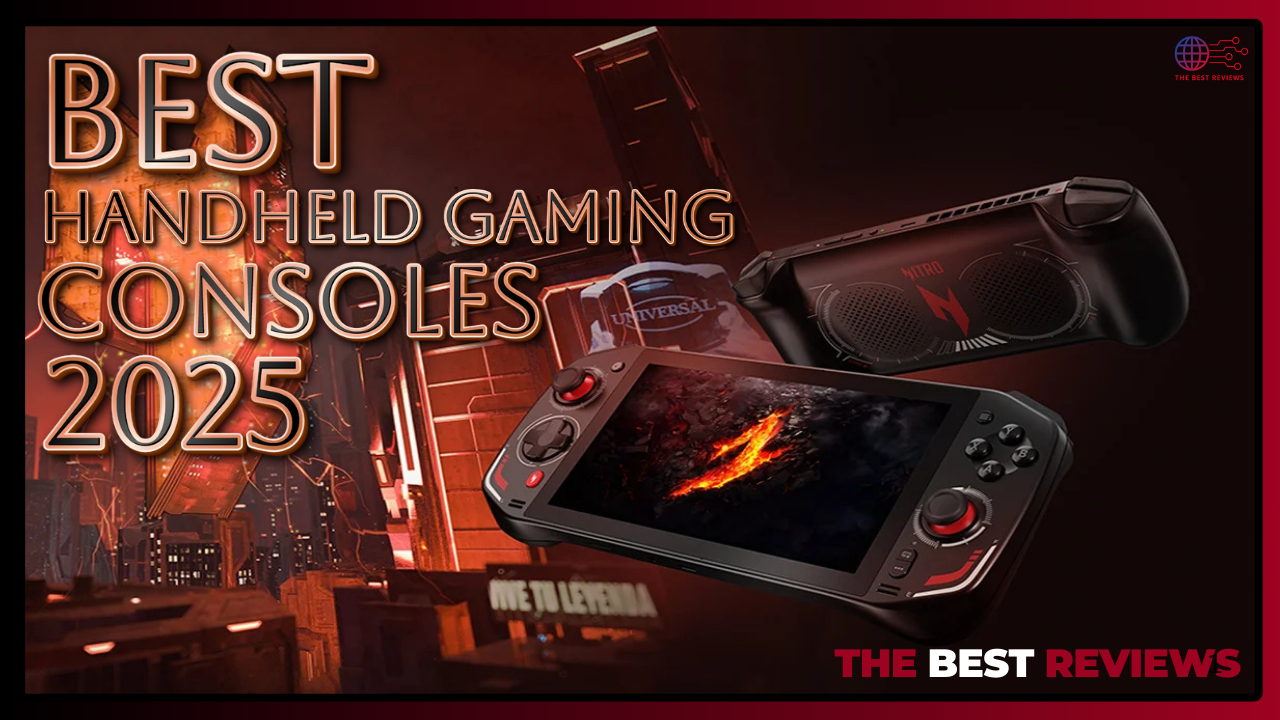The popularity of handheld gaming systems is growing. Although individuals have been playing games on the go since the Game Boy’s time, a slew of gadgets in recent years have made it possible to play a wide variety of games anywhere.
However, it might be difficult to determine which handhelds are truly worth your attention because it seems like new models are released every week.
We don’t need to remind you that the Nintendo Switch is fantastic, but the ideal handheld device might be a $800 portable PC or a $70 emulator, depending on your preferences.
We’ve investigated the greatest handheld gaming consoles, put a number of them to the test, and listed the ones we currently like the best to help you sort through the clutter.
Table of Contents
- Steam Deck
- Asus ROG Ally
- Nintendo Switch OLED
TOP 3 BEST HANDHELD CONSOLES 2025
1 : Steam Deck

Everything you love about the Steam Deck, now upgraded with an OLED screen, improved battery life, faster WiFi, and more. Experience vivid colors and deeper blacks with the HDR OLED display, meticulously crafted for gaming, offering stunning contrast, sharp clarity, and an expanded view.
With richer colors, true blacks, and exceptional motion performance, your games will feel refreshed and dynamic Both the LCD and OLED Steam Decks deliver powerful, portable PC gaming with comfort and a console-like experience.
Where Power and Portability Unite In collaboration with AMD, we designed a custom APU for Steam Deck, tailored specifically for handheld gaming A Zen 2 and RDNA 2 powerhouse, providing ample performance capability to operate.
the latest AAA games in a very efficient power envelope Control with comfort The Steam Deck was built for extended play sessions whether you’re using thumbsticks or trackpads with full-size controls positioned perfectly within your reach.
The rear of the device is sculpted to comfortably fit a wide range of hand sizes.
Pros
- You can install Windows on it if you really want to, since it’s a regular PC
- Software will improve over time and as such it will become more compatible with windows games (since it essentially simulates Windows inside Linux to run Windows-only games)
- is repairable with parts that valve will sell, so if there’s an issue chances are you can fix the device rather than buying a new one or having to ship to valve
- can also be used as a regular PC if you use a USB hub or buy the official dock when it comes out
- you can play a lot of really good PC games at great performance (for the most part)
Cons
- The Steam OS needs a lot of improvements but Valve has been doing a ton of updates very rapidly, so things should improve quite fast
- Hardware isn’t perfect but it’s still pretty great from what reviewers have been reporting
- Software compatibility needs work since running Windows apps on Linux has been a decades-long effort and is still not perfect, and all steam games are currently being tested for compability with the Deck. Compatible games are now filterable on the steam store, and you can still give your games a try either way
- Battery Life isn’t great, but that’s a limitation of current era tech, since the Deck uses a lot of energy as it is quite powerful hardware-wise, but there’s software improvements to that on the system level to make things better
2 : Asus ROG Ally

I initially criticized the original Asus ROG Ally Perhaps a bit too critical, as many of the issues I encountered stem from the inherent nature of a Windows-based handheld gaming console.
When I first got the new ROG Ally X, I made an effort to approach it with a more open mind. It wasn’t difficult, as the updated model offers significant improvements. However, certain challenges remain insurmountable.
The ROG Ally X bears a striking resemblance to its predecessor, with the primary difference being a fresh black finish. There are subtle differences, like rounded-out grips that are more comfortable to hold, slightly elevated ABXY buttons, and an eight-direction D-pad that handles diagonal movements a bit better.
If you didn’t look too closely though, you’d be forgiven for thinking little has changed But under the hood, Asus has made some massive improvements.
Most notably, the battery size has doubled. The original ROG Ally had a 40-Wh battery, roughly comparable to the original Steam Deck.
Pros
- Almost never had any performance issues
- Speaker quality is better than expected
- Software is constantly being updated and improved from Asus
- Screen is absolutely beautiful, best handheld screen I’ve ever used
Cons
- Battery life leaves a little to be desired
- Windows 11 issues suck when in handheld
- Doesn’t really get loud by any means, but you can feel the heat out the top of the system and hear the fans whirring pretty hard when running a taxing game
- Stock user interface for settings isnt the best for me personally
3 : Nintendo Switch OLED

First came the Switch in 2017; then an updated model in 2019 replaced it at the same $300 price, but with a modest battery life bump.
It was joined by the $200 Switch Lite that year, which nixed the dock and removable Joy-Con controllers. The new Switch OLED is easily the most advanced of them all There are four main changes: a 7-inch OLED screen replaces the 6.2-inch LCD, there’s more built-in storage, there’s an Ethernet port in the dock, and there’s (yes) an overhauled kickstand.
The revised screen is fantastic, and I promise I’ll get to it, but it’s the kickstand that has me so ecstatic. Seriously, I had no idea a kickstand could be this exciting.Rather than a tiny piece of plastic than a tiny piece of plastic that props the whole Switch up in one angle only on the most stable of surfaces, the new kickstand runs alongside the entire back of the console, just like on Microsoft’s Surface tablets.
It’s easy to pull out—no nails needed—and you can angle the console super low or nearly all the way upright. It’s so much more versatile.I put both the OG Switch and the OLED on the arm of my couch, and only one toppled over. Can you guess which No need to worry about falls on turbulent planes or bumpy trains.
It even passed the lap test! Like a stable laptop, the Switch OLED stayed put on my lap as I removed the Joy-Cons and sank time in ZDR, the creepy planet and setting for Metroid Dread If you regularly use the kickstand, this change alone is worth the upgrade.
Pros
- New vibrant (and larger) OLED screen
- Retains excellent Switch features and library
- Matte plastic coating feels good to hold
- Improved battery life over previous models
- Redesigned kickstand
- Added LAN support
- Extra storage
Cons
- Modest upgrade
- More expensive
- No 4K capabilities
- Display still 720p
- Still uses the same drift-prone Joy-Cons
- No performance improvements or benefits for docked play
- Heavier than other Switch units
How we test handheld gaming PCS
When we test handheld gaming PCs, we live with them in the same way you would at home, using them to play the latest big-budget games and any indie titles that take our fancy.
This will highlight any failings in battery life, how the screen looks long-term, and how the thumbsticks feel after hours of play. Each device is calibrated to play as it should and compatible games are tested at multiple different settings.
Fast-paced shooters are perfect for testing the response of the screen, and the neon-dripping world of Cyberpunk 2077 makes for an excellent HDR tester. We try to cover a good range of use gaming use cases.
We also go through a series of experiential tests to highlight any performance problems, as well as assess heating over the long term and how upgradable things like the internal storage are. It can be easy to get lost in a sea of numbers so, as well as doing specific tests, we make sure we get lots of time in every day as we would with a traditional gaming rig.
Given they are handheld gaming PCs, the feel is incredibly important so we make sure to test lots of different types of games to find each device’s strong and weak points.
Best handheld gaming PC FAQ
What is the most powerful handheld gaming PC
As of right now, the Steam Deck is the most powerful device. However, any AMD HX 370-powered device you see will share similar performance, and Lunar Lake handhelds such as the MSI Claw 8 AI+ aren’t far off. The latter has the advantage of being much cheaper than the F1 Pro and having better battery life.
What CPU should you look for in a handheld gaming PC?
The best commercial CPUs for handheld Gaming PCs right now are either the AMD Ryzen AI 9 HX 370 or Intel Core Ultra 7 258V (there might be other Core Ultra 200V processors in handhelds down the line). Previous-gen ones are still very strong choices, though, especially if you can pick them up for cheap: the Ryzen 7 8840U and Ryzen Z1 Extreme are still powerful handheld processors.
How much RAM do you need in a handheld gaming PC?
16 GB of memory should be the minimum amount of RAM you look for in a handheld gaming PC. This is because handheld memory counts for both system memory and the GPU’s VRAM—two portions of memory which are usually separate in desktops and gaming laptops. A few GB will ideally be used as VRAM, so if you have have 24 GB of memory, that’ll still leave 16+ GB for your system to use with up to 8 GB used as VRAM for the GPU. 16 GB is fine though, especially if the handheld’s only using, say, 4 GB of that for the GPU.
How much storage should you get in a handheld gaming PC?
Though bigger is better, and this is especially true when you can often upgrade storage, the sweet spot for commercial handheld gaming PCs right now tends to be at around 1 TB. This gives plenty of room for both big-budget titles and smaller indie games.

